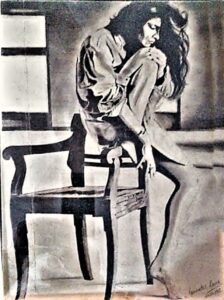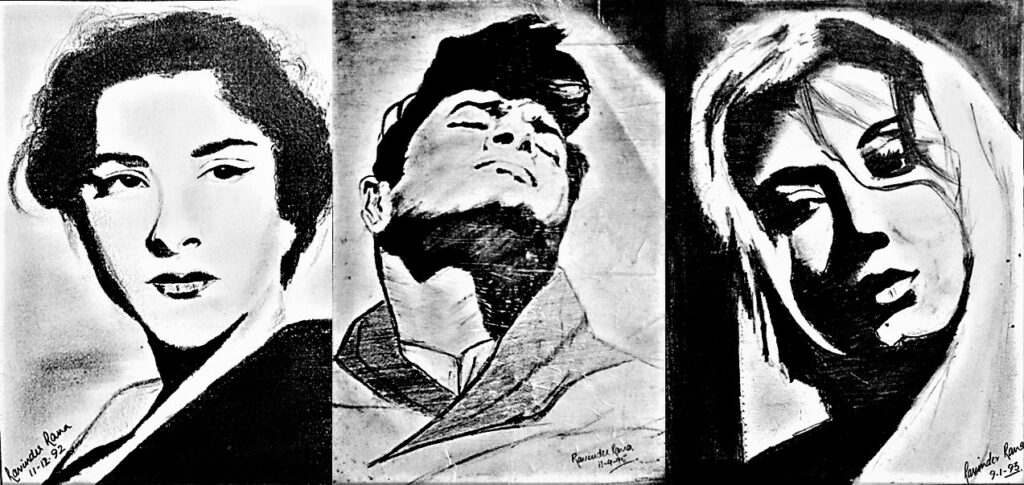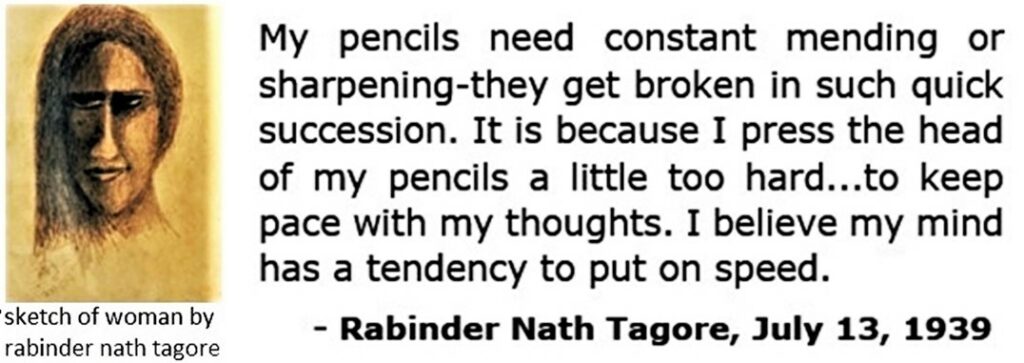For an artist to live age is no bar. Art knows no boundaries and no prejudice. Art is a discipline of awareness. Great compositions do not just happen by accident. They take planning, patience, and a knowledge of all the visual elements at hand.
Tagore began wielding the brush at the age of 67. ..” Lines and colors became a passion for him. He also realized that he was using the eraser more than the pencil, and dissatisfied with the results he finally withdrew, deciding it was not for him to become a painter.
When interest turns into passion, extraordinary results are bound to emerge. “You develop your own style, you develop what you have inside of you,” Worobetz said.
Ravinder S Raina (nickname, Kalu) took up early & left for Heavenly abode very young. He was blessed with the virtues of kindness, humility, and charity. In the pursuit of spiritual and emotional growth, he matured into young adulthood with the influence of his father on himself. His father Er. H S Raina, a spiritualist karma yogi who is revered as ‘Bhishma Pitamah’ among his fans; is adjudged the ‘Best Citizen of India’ by one school of thought.
I am lucky to have been around his beautiful artwork which Kalu had created throughout his life. Ravinder Villa, Karan Nagar, Jammu is the perfect place to display that! Perhaps, he wanted his work to communicate a unique message and to stand out, and stand alone. His art is so cool.
The art of drawing sketches is at the core of every effective figurative image. Rhythm is especially important in anatomy sketches. In Kalu’s ‘masterworks,’ one finds the application of varying levels of darkness to create the illusion of depth, adding value to create form, space, and most importantly – light; he knew how to bring his drawings to life, it appears. Art of Shading has made his sketches appear three-dimensional and create a convincing image, adding feeling and strength to his compositions with expression and power. There is a different texture and “feel”. Most likely, he sketched from photographs and memory. Photorealism* evolved from Pop Art (abstract expressionism) in the 1970s.
Shading added depth, contrast, character, and even movement to his drawings by capturing the shadows and highlights of his subjects. He could reduce or increase the tones obtained by decreasing the pressure on the paper.
Any rendering in pencil looks attractive because of the use of light and dark shades. A thorough understanding of the various gradations or values is, therefore, important. Repetition and overworking, hatching, cross-hatching, scribbling, and smudging are the skills.
The human face is probably the most difficult subject to render accurately. It takes talent to develop the skills needed to capture proportions and subtle features that make for a convincing resemblance of a person. Values are the lights and darks. Drawing hair is one of the trickiest parts of a portrait; & he had drawn it.
Circulism# is a very interesting technique to create skin texture with a pencil. To draw a character face of a hero-like character, the process involves an optimal placement of the facial features that will give the character-an actor-like look. He worked around the lightest light spots.
In his sketches, Ravinder paid special attention to the glares and reflections. The young artist worked into and out of his darkest dark. He did it until he could do every stroke without much premeditation, and he understood where each stroke could be useful throughout the pencil portrait process.
A very important part of drawing realistically is shading the variation in value from shadows to highlights that describe the shape.
Prof. (Er.) Chander P Mahajan is an art critic & a free lance journalist. The Environmentalist stays in Shimla and Dalhousie, Himachal Pradesh, India.








